-
Posts
363 -
Joined
-
Last visited
Content Type
Profiles
Forums
Blogs
Gallery
Events
Store
Posts posted by Peter_Suciu
-
-
Helmet plates for RMC are often found on e-bay at under $70.00 but you would have to remove the pugaree. Alternatively, keep the pugaree (which is a real beaut!) and get an RCE pugaree badge - which is simply the RCE cap badge of the era. If restored to an RMC helmet then it would display well with the tunic. If restored as an RCE helmet then the uniform would not be a match.
Good stuff Clive! Great information.
But alternatively Jeff could just display as is too? I know that the RMC wouldn't have likely worn the pugaree, but to me that would be a shame to remove it, in part because you might never be able to get it on quite as nicely.
Very nice group!
0 -
I would like to ask one more question, the one everyone hates to answer, but hopefully you will indulge me. What is the value on something like this?
It is worth what someone is willing to pay for it.
But I would say that the helmets have really been on the rise in recent years. So well over $2000US anyway.
0 -
The Canadian forces adopted the Wolseley helmet in 1910 (thanks Clive) in place of this style.
That late? Good to know. I knew it was a bit later in Canada!
 0
0 -
There are two holes to the front of the helmet for presumably a helmet plate, what would the correct one look like for this helmet??
The chin strap is also missing, what would the correct chin strap look like and would anyone know of someone selling the required parts?
Hi Jeff--
These helmets were worn with a Canadian militia plate, but I don't know how late these were used. This is the Foreign Service Helmet, which was first used in 1878. But these were mostly out of service in the British army by World War I.
Officers worn these with a chinchain for dress, and there were simple leather straps for other times. You can generally find a chinchain on eBay, but this looks fine without it.
Is there a maker label in the helmet? Very nice set. I would love to find a complete Canadian helmet with the militia plate. I've been looking high and low for one.
PS
0 -
Yes, Rick, that might be what it is, from the teeny-tiny scan of the card, as opposed to the GIGANTIC hat-scan .

Although, as an apparent private, his attachment to an Indian Army regiment seems very very (even incredibly) odd indeed. Indian army regiments had no use for European enlisted personnel (not to mention others...).
Ed--
I don't know what you mean by "had no use for..." because I don't believe that is the case. As Stuart mentioned there were most certainly NCOs from Europe in the Indian army. While it was uncommon attachments from one's regiment to another for special service was never unheard in the British military.
 0
0 -
I sow the helmet yesturday, the liner is marked 1955, so it's a post war one, but the helmet looks like a ww2 one also the color of the helmet is much darker. Do you think this is a ww2 helmet with post war liner or the entire helmet is post war. I forgot the liner doesn't fit so good. I am waiting you answer.
That's not uncommon, since the liners can be changed so easily. The shell could be WWII. From the photos the paint looks right, but I can't give a 100% on it without seeing it in the flesh.
You have to keep in mind that many of the WWII shells were reused and repainted after the war. So the shell could date from WWII. It is just impossible to say without seeing the helmet in the flesh. But if the price is right what's the problem. It is certainly the "WWII style."
0 -
The chinstrap is wrong for an American helmet. This looks to have been replaced, or is the liner chinstrap looped through the steel helmet D-rings?
The shell looks like it could be WWII. The paint was a bit different for Korea, but you'd have to see it in the flesh to make the call. Digital photography can alter the shade of the paint. The liner looks like a Westinghouse to me, but I'm not an expert on American liners. I do think it is late WWII American, but missing the canvas chinstrap.
0 -
Here is a recent addition. A Model 1880 pith helmet, likely used by the NY National Guard.
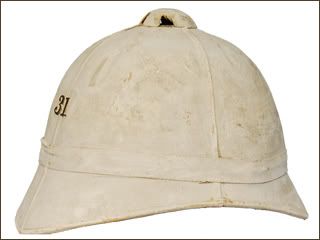 0
0 -
Any idea about this South African WWII sun helmet? This is dated 1942. I can't find much information on SA Divisions or Regiments, but I was told First or Second SA Division.
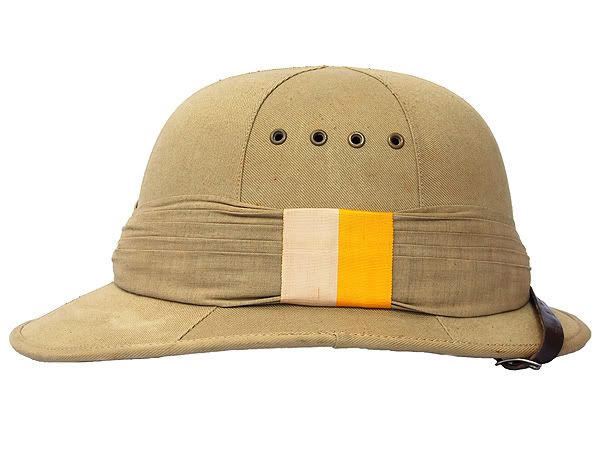 0
0 -
And the M&E illustrations are of the HIGHEST quality!

That should work! Thank you!
0 -
I urgently need a photo (high resolution) of a Victoria Cross. Does anyone have a high resolution photo that they could share with me for publication in a magazine. I can promise photo credit if that helps.
0 -
I am trying to help a friend identify this ribbon bar.
As stated by my friend:
It has 3 ribbons on it, the 1st is the World War 2 Victory Medal, the 2nd one I have no clue, and the 3rd is World War 1 Occupation Medal. I have looked everywhere and so far I have not been able to find out what the 2nd ribbon is. It is blue-white-red-white-red-white-blue
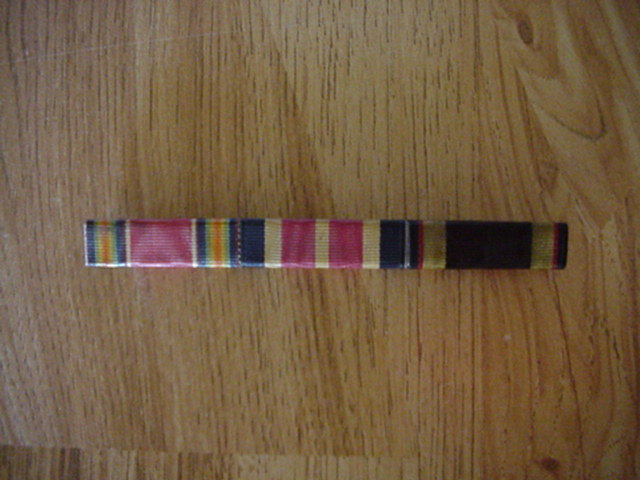
 0
0 -
Any idea which regiment or other unit may have used this flash? This is on a Wolesley helmet. It appears Green/Blue/White.
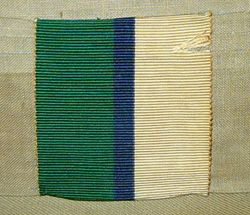
 0
0 -
A new addition to my pith helmet collection. This is a circa 1900 pith helmet from Argentina:
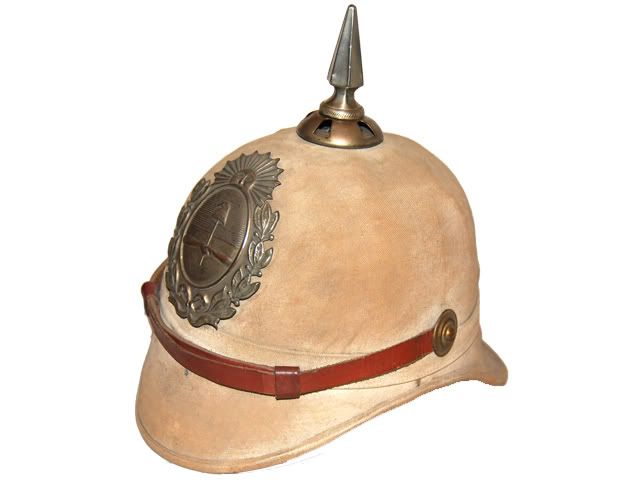

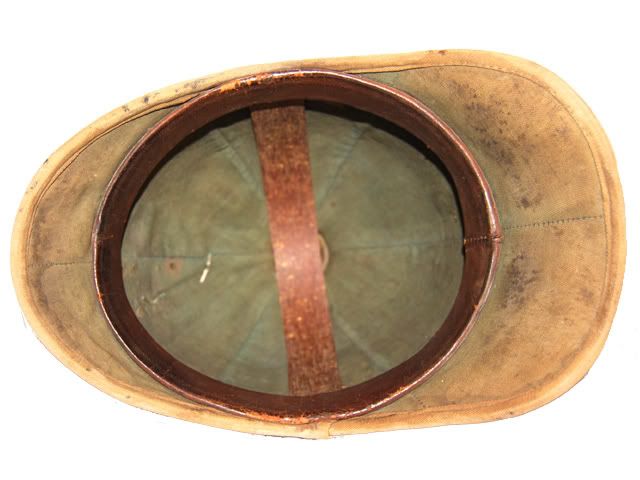 0
0 -
Very nice Leigh! Quite an interesting regiment, I must say.
0 -
Don't throw it away. Worse case do you have a young relative that would like to play with it? I imagine any 10-year old boy would love to play Army with that helmet.
0 -
A cracking piece of headgear
Didn't the Artists Rifles go on to be the SAS?
Thank you Tony, and yes they did form the 21st SAS. Interesting history. I had known this helmet was for sale for more than a year, but when I was in London I was able to see some of the collection of the Middleset Volunteer Rifle Corp at the National Army Museum in Chelsea, which included numerous paintings of the regiment by members of the regiment.
The Artists Rifles were actually made up of painters, writers, poets, etc. So as a writer/journalist this was always a helmet I wanted. But seeing the paintings in the museum convinced me... and the final straw was that the museum had the book, "A History of the Artists Rifles: 1859-1947" by Barry Gregory. So enough said, I had to buy the helmet!
0 -
I've wanted a nice cavalry helmet for a while. I'm very happy with this one from the 5th (the Princess Charlotte of Wales's) Regiment of Dragoon Guards. I need to take some better photos, but these helmets have such a reflection!
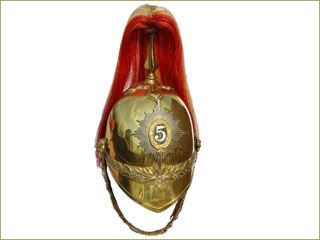 0
0 -
This is a new addition to the collection. An other ranks helmet of the 20th Middlesex Volunteers (The Artists Rifles).
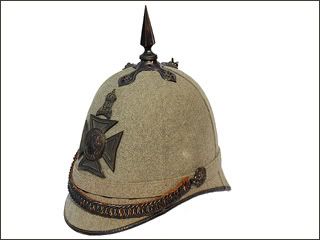
 0
0 -
The original helmet is a MkII, but as has been suggested the liner is post-war and could be from anywhere. I would suggest Greece as a possibility, but I wouldn't rule out Belgium.
The "Turtleshell" in the photo is also a MkIV not a MkIII. The MkIII features a screw system similar to the MkII, while the MkIV has the same basic shell but a "lift the dot" type liner attachment. Also the MkIII features a higher placement of the chinstrap rivet.
Compare the rivet placement in the shells:
My MkIII:
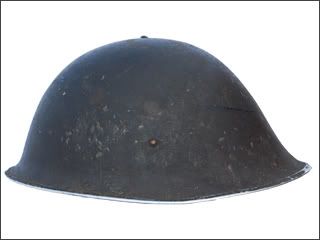
My MkIV:
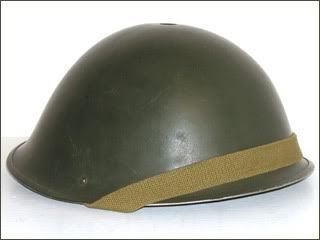 0
0 -
Do you know anything about the "Dutch" tropical helmets sometimes worn by the Afrikakorps?...
if so... hit us with a thread about it... I think they may be South african instead of Dutch.
I think you may be correct... frankly I think the helmets were French and South African. I don't know where Dutch came from, except some collector's price guide from the 1970s that I have a memory of said "Afrika Korp helmets made by the Dutch." Where would the Germans have gotten those? I guess there could have been some in Holland, but I find that to be unlikely. There were plenty of unissued German pith helmets so why would they use Dutch helmets, and there were no Dutch colonies in Africa so we can rule out that they were captured in the field.

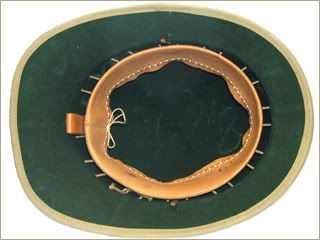

I looked up to see South Africa's role in WWII. Two divisions including the South African 1st Infantry Division and the South African 2nd Infantry Division were in North Africa. It is worth noting that two complete infantry brigades of the 2nd were captured at Tobruk, while the 1st fought at the Battle of El Alamein and was then recalled to South Africa. The South African 6th Armoured Divsion fought in Italy, while the South African 3rd Infantry Division, which was on home defense duty, did send replaces for the 1st and 2nd ID. Additionally one brigade took part in the invasion of Madagascar in 1942.
So it does seem possible that a fair amount of pith helmets, if they were used by the 2nd ID could have fallen into German hands in 1941. Interstingly I've never seen one with German plates on it.
0 -
Here is a very unique helmet that I recently picked up. This is known as the French Indochina helmet. This style of helmet was based on the French Model 1931 tropical helmet, but is made of a lightweight pressed fiber with a water-proof canvas cover. These were locally produced helmet in French Indochina, and used as private purchase officer's helmets. These feature a plastic liner system, which would be later used with the North Vietnamese Army sun helmets. So these are sort of the "missing link" between the French tropical helmet and the Vietnamese sun helmets... and it is sort of the interesting that the former native army adopted the helmet of the imperialist.
This example was made in Saigon, and has a maker's tag from N?n Rang Dong, BVK. The original owner's initials(?) is written in pen: "VAN 3-6-54."
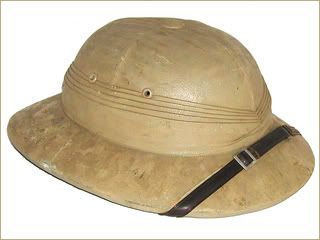

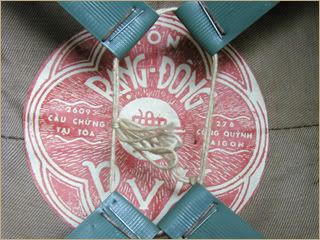 0
0 -
A new addition of mine. Based on the British Wolseley design, the Model 1931 tropical helmet was used throughout the French colonies, including those in Africa, the Middle East, South America, the Pacific and French Indo-China. These helmets were used by both Vichy and Free French Forces in World War II. This examples features the standard marine anchor.
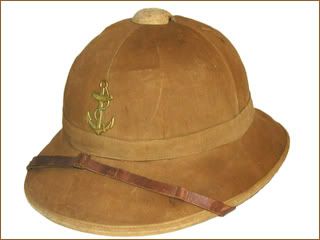 0
0 -
The later version with the khaki color:
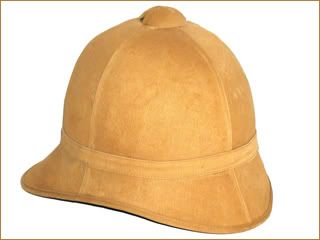 0
0




How to start my studies of British colonial warfare?
in Great Britain: Empire: Colonial Including South Africa & India: Awards, Militaria & History
Posted
Some of Saul David's books are very good. His book "Victoria's Wars" is very good, and only covers the era up to the death of Prince Albert. This is a good companion to David's "Indian Mutiny."
I would also highly recommend Bruce Vandervort's "Wars of Imperial Conquest in Africa: 1830-1914" as this isn't limited to the British, but helps give an overview of the European mindset. Understanding the French, German, Italian, Belgian and Portuguese motives helps make the British rational a bit more clear.